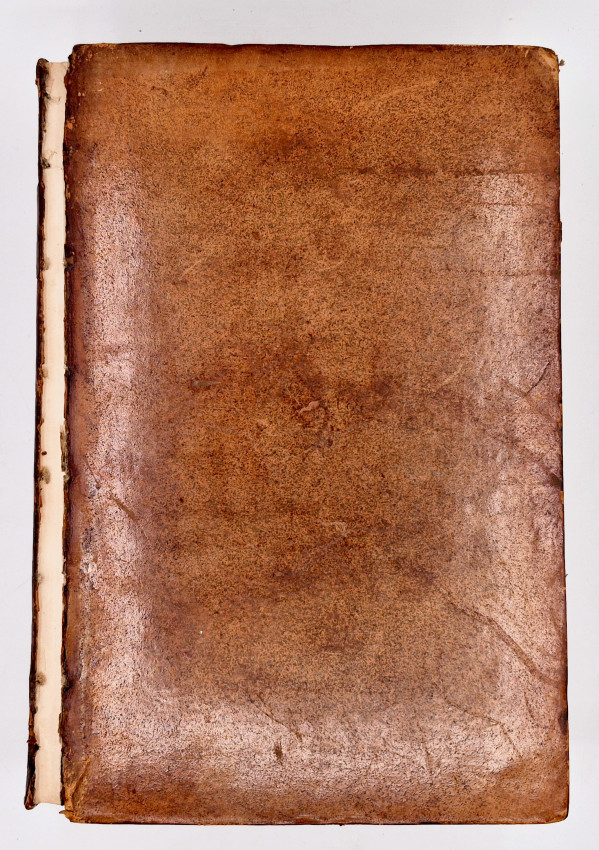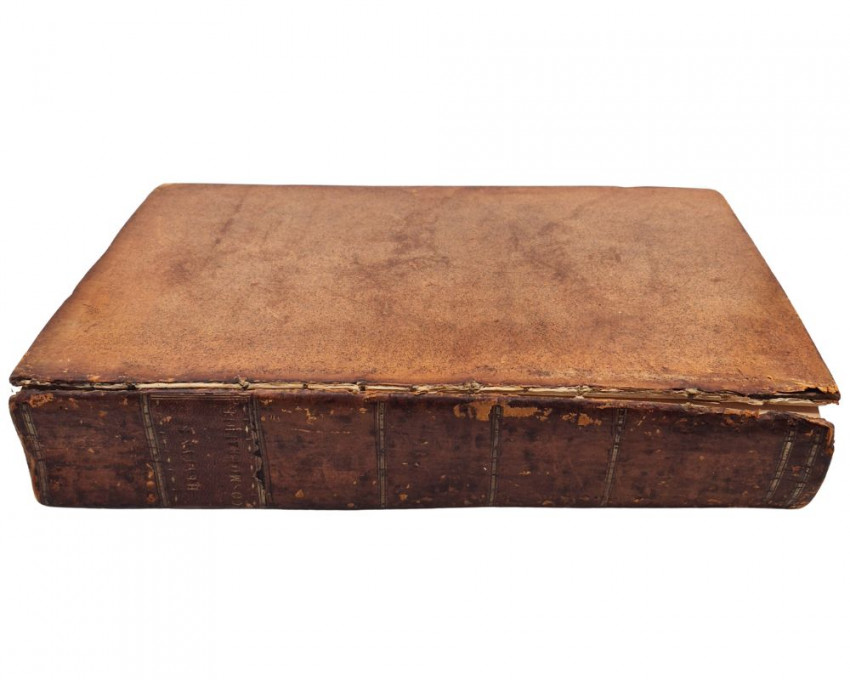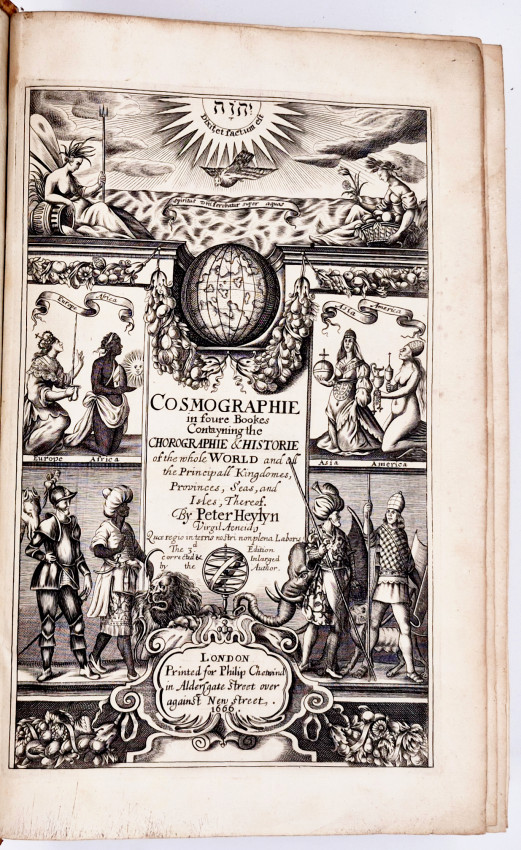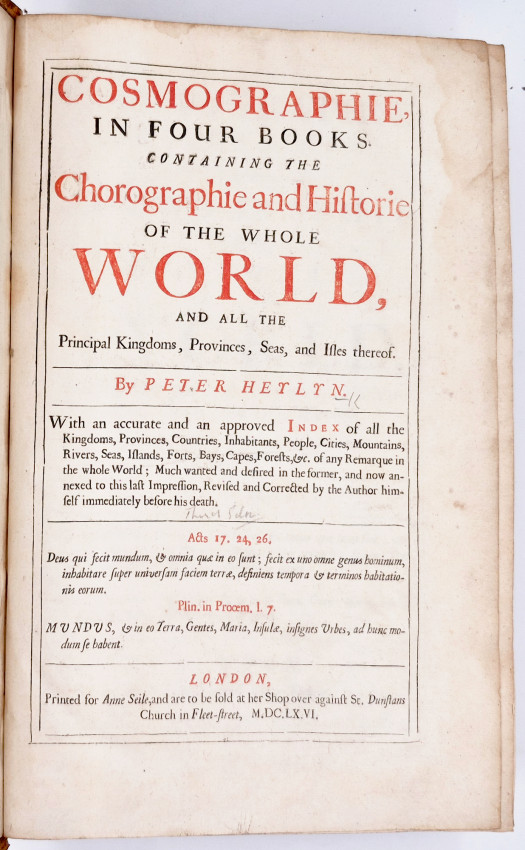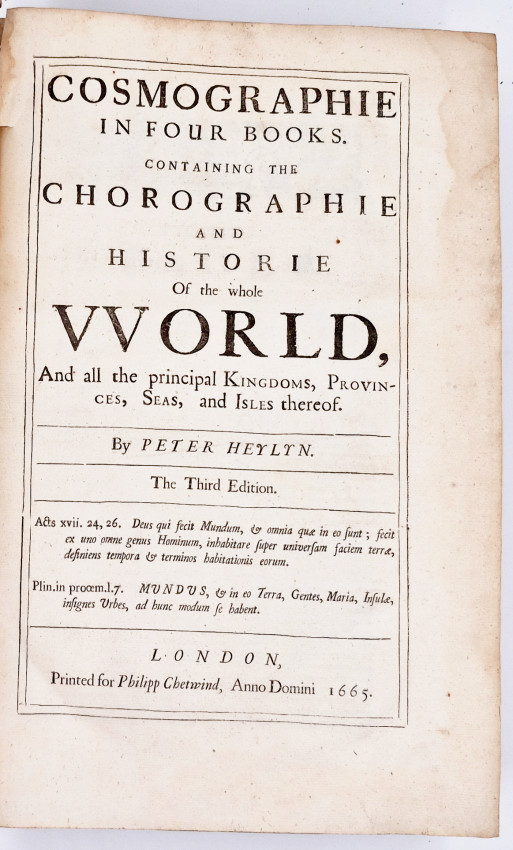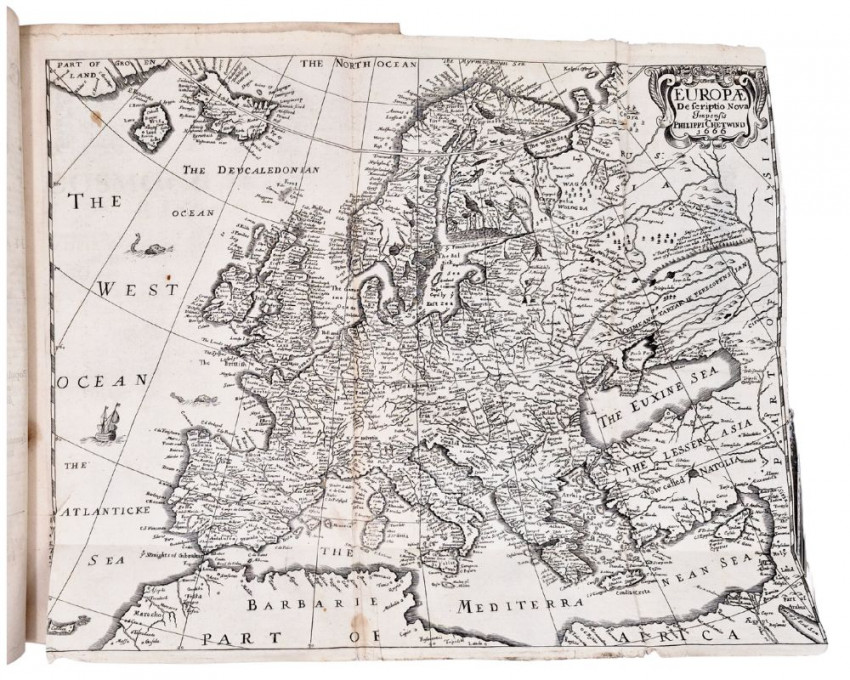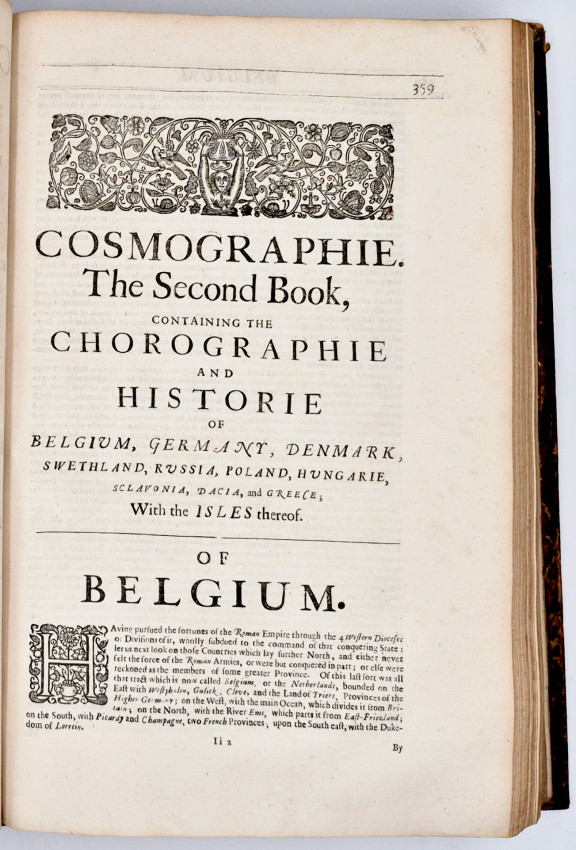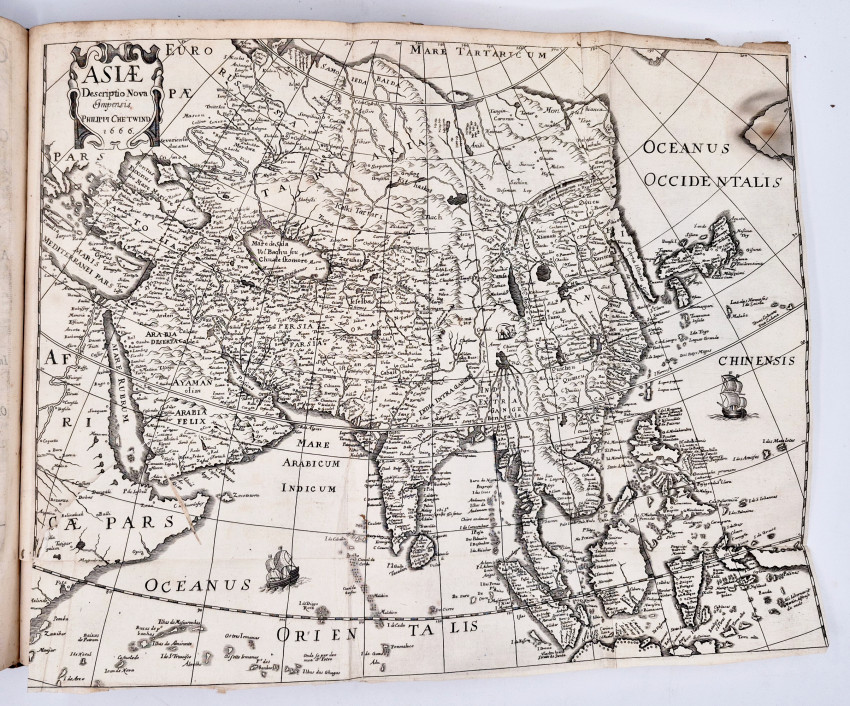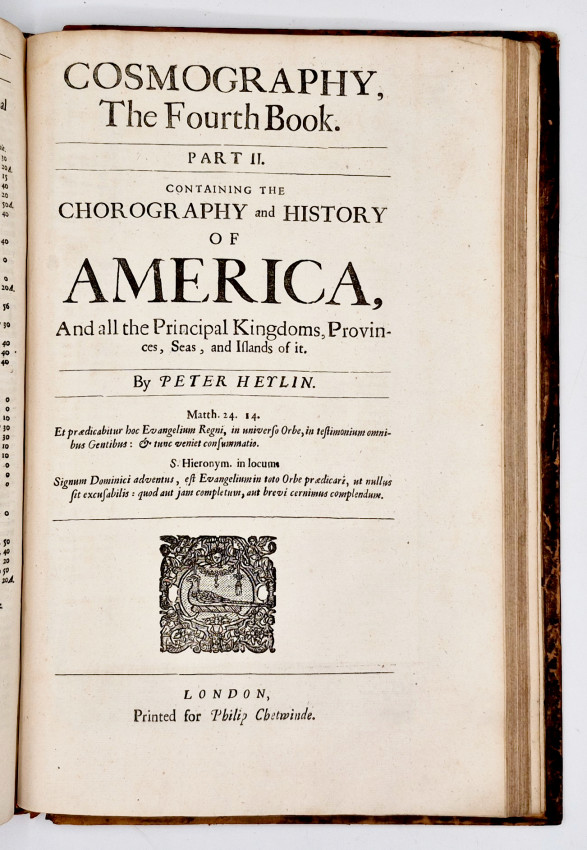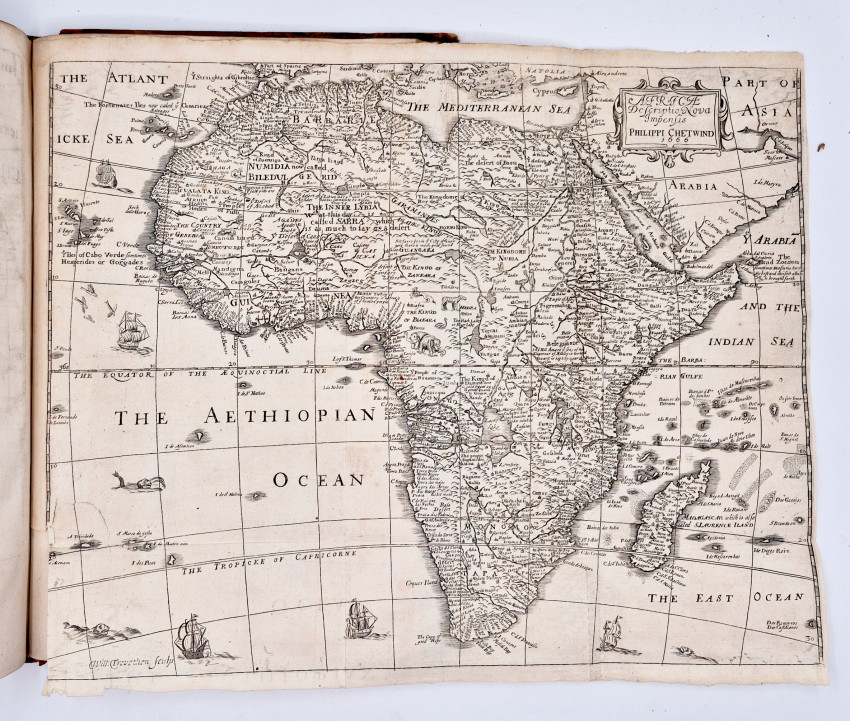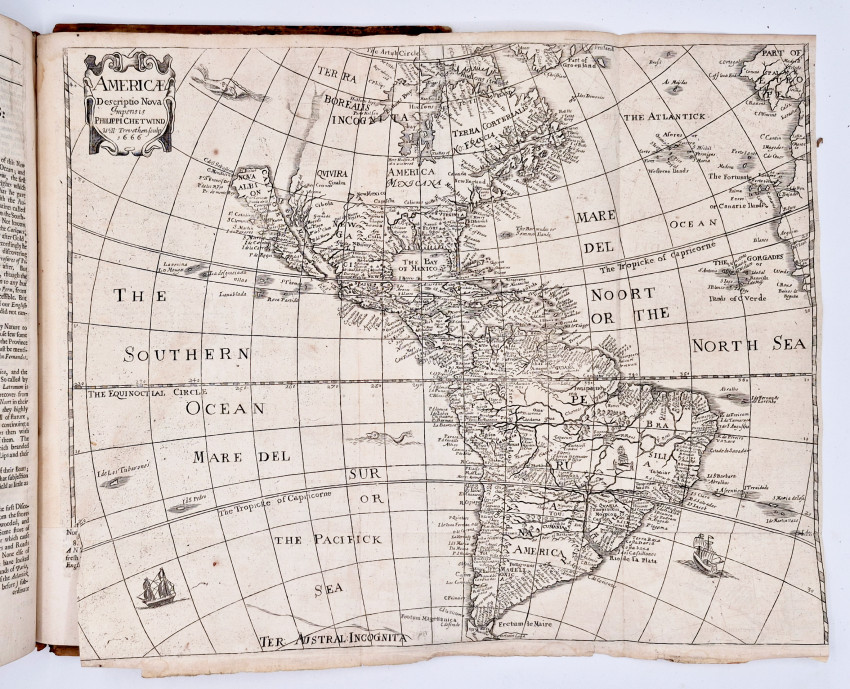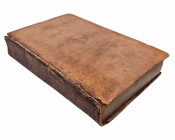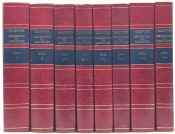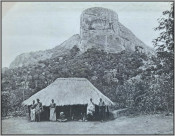With an accurate and an approved Index of all the Kingdoms, Provinces, Countries, Inhabitants, People, Cities, Mountains, Rivers, Seas, Islands, Forts, Bays, Capes, Forests, &c. of any Remarque in the whole World; Much wanted and desired in the former, and now annexed to this last Impression, Revised and Corrected by the Author himself immediately before his death.
The 3rd Edition corrected & inlarged (sic) by the Author.
Three title pages: 1. Engraved title page - Printed for Philip Chetwind in Aldergate Street over and against New Street 1666. 2. Printed title pages in red and black - London, Printed for Anne Seile, and to be sold at her shop over against St. Dunstans Church in Fleet-Street, M.DC.LX.VI. and 3. a third title page printed in black, Printed for Philipp Chetwind, Anno Domini 1665. (xvi), 109, (ii table), (ii Appendix title), 1089 - 1095 Appendix, (i blank), (xxxix Table), pages, 4 folding maps, contemporary full sprinkled calf, upper board detached, red title label on the spine, bound as a tight back, contents clean and free foxing.
See Oxford Dictionary of National Biography for a long biographical essay on Heylyn by Anthony Milton (https://doi.org/10.1093/ref:odnb/13171) which briefly mentions the Cosmographie:
'...and perhaps his most famous work, the Cosmographie. Published in 1652 this was an enormous and highly popular expansion of his earlier Microcosmos into a folio volume of nearly a thousand pages, and was sufficiently well regarded that the council of state saw fit to obtain a copy for their better instruction.'
Wikipedia (https://en.wikipedia.org/wiki/Peter_Heylyn) 'He was the writer of the "Cosmographie", an attempt to describe in meticulous detail every aspect of the known world in 1652, the geography, climate, customs, achievements, politics, and belief systems. It appears to have been the first description in print of Australia, and perhaps of California, Terra del Fuego, and other territories in the New World. He objected to the name "America" as it placed undue glory on Amerigo Vespucci, and recommended "Columbana" or "Cabotia" as more indicative of the true discoverers, Columbus and Cabot.'
- Overall Condition: Very good
- Size: Folio (360 x 230 mm)


